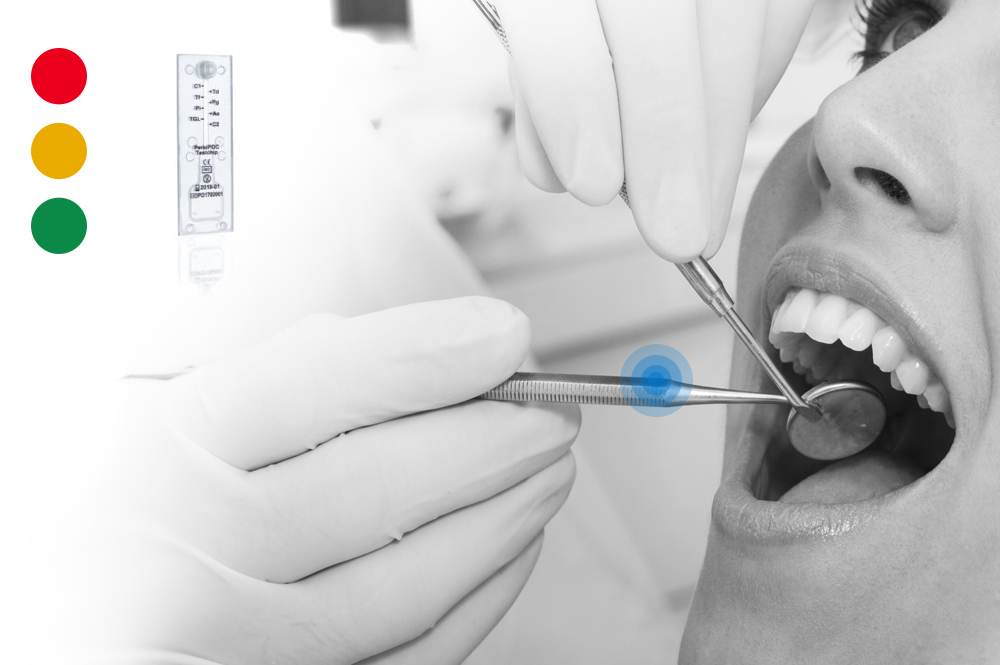PerioPOC is a rapid test that can be performed in the dental studio for the detection of 5 bacteria typically associated with periodontitis. The following bacterial species can be identified:
- Treponema denticola (Td)
- Prevotella intermedia (Pi)
- Tannerella forsythia (Tf)
- Aggregatibacter actinomycetemcomitans (Aa)
- Porphyromonas gingivalis (Pg)
According to the definition of Sokransky et al. (1998), oral microflora consists of several groups of bacteria, called complexes, which are linked to each other by a complex network of metabolites.
While in healthy subjects the oral microflora consists mainly of Gram positive facultative anaerobes, Gram negative anaerobes tend to prevail in patients with periodontitis.
Particularly impactful for the development and progression of periodontitis, is the presence of particular bacterial species in the periodontal pocket.
Among these, the species of the so-called Red Complex Porphy romonas gingivalis (Pg), Treponema denticola (Td), Tannerella forsythia (Tf) and species of the Orange Complex as Prevotella intermedia (Pi). Aggregatibacter actinomycetemcomitans (Aa) are associated with a particularly aggressive form of periodontal disease.
The test’s main principle is based on the fact that the dentist’s diagnosis of periodontitis is made after viewing clinical symptoms such as bleeding gums, inflammation of the periodontal or depth of the periodontal pocket.
The detection of bacteria associated with periodontitis is therefore not a diagnosis of periodontal disease, but a support to enforce the dentist’s therapeutic choice.

